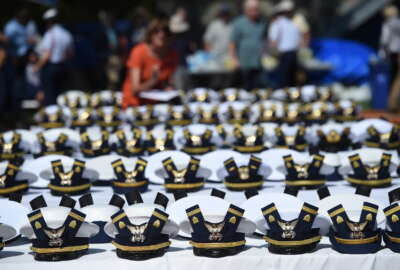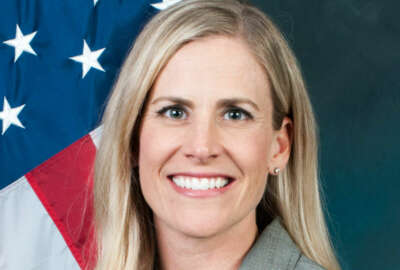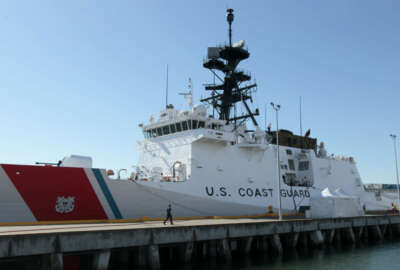Coast Guard on track to meet its recruiting goals
"This year, we have met our reservation numbers. We're on the trajectory to at least stop losing people at a greater rate," said Adm. Linda Fagan.
The U.S Coast Guard is on the trajectory to meet its recruitment goals after falling short of its recruiting targets for the last four years, a service commandant told lawmakers on Wednesday.
The maritime force, which is charged with a wide range of duties, including emergency response, protecting ports and waterways, and drug interdiction, is currently 2,300 members short but has enough members who have signed up to go through training at the Cape May training center in New Jersey. Adm. Linda Fagan said the service is on track to “at least stop losing people at a greater rate than we’re onboarding and the talent that is coming to the service.”
“We have, as of two weeks ago, the number of reservations, that means people who are planning to go through Cape May, that we need to consider a full, successful year and meet our recruiting [goals],” Fagan said.
For fiscal 2025, the service requested $12.3 billion in discretionary funding, which includes plans to bolster military and civilian pay and benefits, invest in its integrated primary prevention program and overhaul its talent management system, which has not been updated in the last 75 years.
“My highest priority remains modernizing our talent management system,” said Fagan.
The service recently created a career path for recruiters, also known as talent acquisition specialists, to focus solely on talent acquisition and retention. Gary Rasicot, deputy for personnel readiness, said the service plans to make recruiting a permanent career track rather than a temporary shore assignment given to Coast Guard members serving in other occupations.
The Talent Acquisition (TA) rating will be implemented in phases, converting 80 out of 384 special assignment billets to TA billets first. The second phase will convert about half of the remaining special assignment recruiter billets to TA positions.
“Over the past several years, [congressional] support has allowed us to bring on more recruiters and establish the talent acquisition profession — all of those investments are paying dividends,” said Fagan.
Alarmed by the service’s dwindling numbers, House lawmakers authorized nearly $12 million in May to fund additional recruiting personnel and offices for the Coast Guard Recruiting Command and $9 million to enhance Coast Guard recruiting capabilities.
In addition, the bill includes several provisions designed to address quality-of-life issues, including allowing Coast Guard reservists to take parental leave for up to 12 inactive-duty training periods and authorizing a maternity uniform allowance for officers. The bill passed in May by a 376 – 16 vote.
While the service is cautiously optimistic about its recruiting numbers in 2024, the impact of climate change, cyberattacks, an increase in illegal fishing, drug interdiction operations and a dramatic increase in the number of international conflicts pose significant challenges as the service’s workforce and resources are being stretched thin.
“We’re doing more than we’ve ever done, and more is being asked of us. We’re doing less with less. Our needs across the service are at risk of outpacing our ability to operate in the exceptional ways that we do,” said Fagan. “We need to provide our workforce with the tools they need to be successful modern ships, boats and aircraft in the infrastructure and systems to support them. We must address their basic personal needs housing, childcare, health care, so our crews can stand the watch with total focus knowing that their families are taken care of.”
Copyright © 2025 Federal News Network. All rights reserved. This website is not intended for users located within the European Economic Area.







